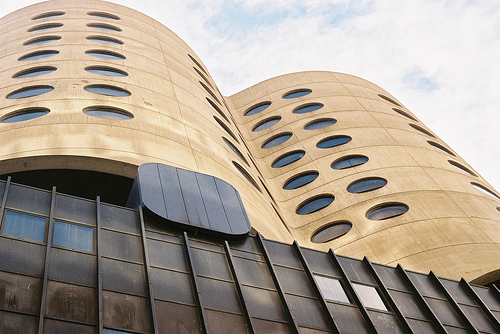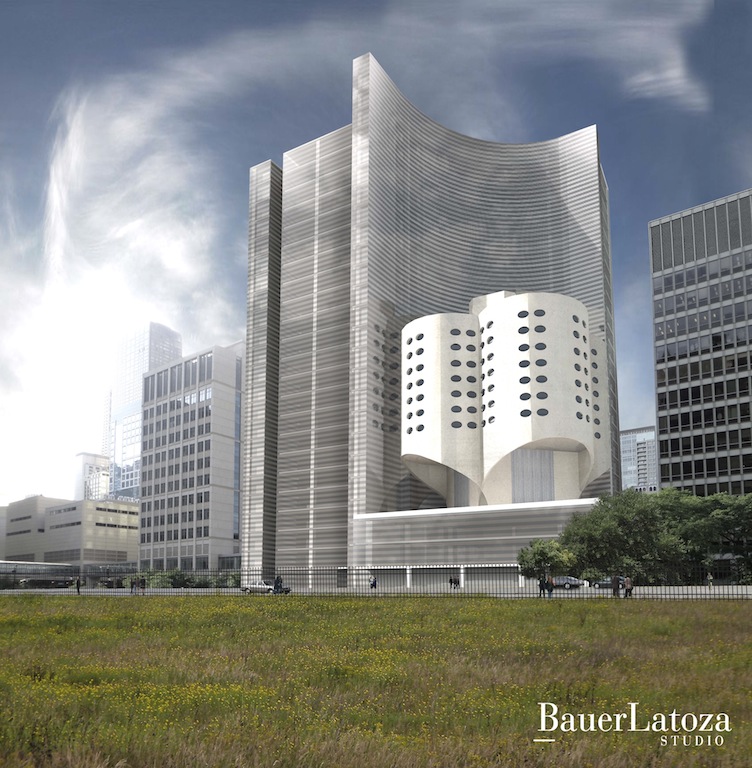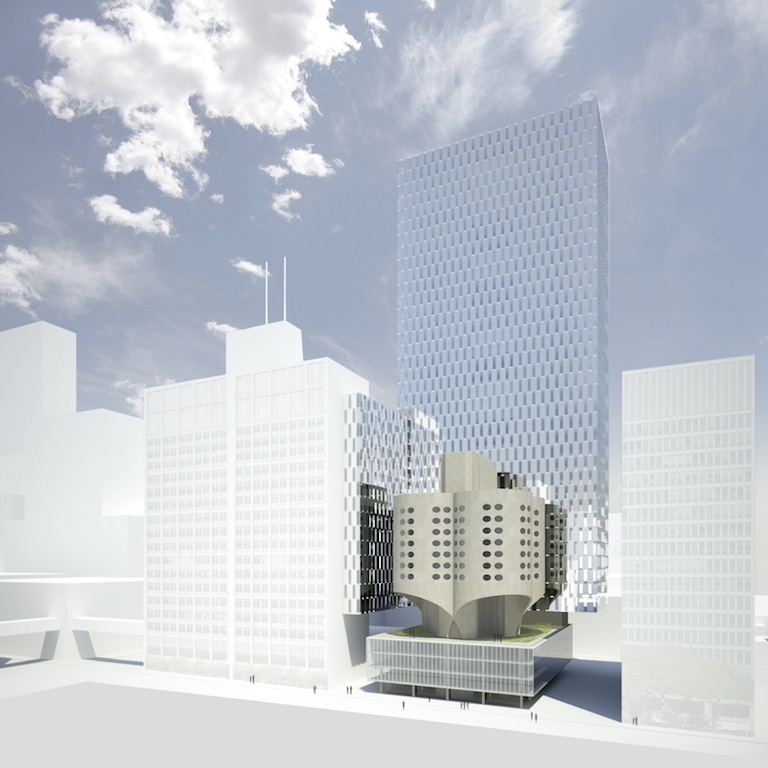Preservationists: Re-using former Prentice Hospital could mean more money, jobs
By Alison Cuddy

Preservationists: Re-using former Prentice Hospital could mean more money, jobs
By Alison Cuddy
They’ve argued for the architectural merits of the Bertrand Goldberg-designed building. When that didn’t pan out, they went to court. Now, after winning temporary landmark status for the building in court, they’ve brought out a different tactic: re-examining the bottom line.
All along Northwestern University has said tearing down the old Prentice and building a new research facility would generate thousands of jobs and billions in economic investment.
Now the Save Prentice Coalition is following suit. This week they released a new economic impact study, commissioned by the National Trust for Historic Preservation. The study argues that re-using Prentice and developing a new facility would generate more money and jobs than demolition and new construction.
The study claims the rehab would generate one-time taxes and temporary jobs, in fields ranging from construction to finance and insurance. And a re-designed, multi-purpose Prentice would mean 980 permanent jobs and just over $1 million a year in local tax revenues.
In addition to the study, they put forth four different re-use alternatives for the site (one planning proposal and 3 building designs), which were originally submitted for a competition held last year by the Chicago Architecture Club.
In each of the designs, the Prentice building and its iconic, cloverleaf structure, play an auxiliary or supporting role to the main research facility.
Ed Torrez, principal architect at BauerLatoza Studio (and former Chicago Landmarks commissioner), says Prentice would still have an important function.
His design puts office and meeting spaces in Prentice. “That’s where that exchange of ideas would happen. So it would support the research labs but it would support them in a very strong way.”

The BauerLatoza design is called “Embracing Prentice.” The signature element is a towering, concave, glass backdrop to the old Prentice building, which would also provide sweeping corridors to the new research building.

The Kujawa Architecture design involves a neat trick.The new building would be structurally independent, though anchored in a core that penetrates the base of the old Prentice. But as you can see, from certain angles it would appear to almost float above the base, like a card magically rising out of its deck.

The award-winning design by Cyril Marsollier and Wallo Villacorta also involves an optical illusion: kind of a now-you-see-it, now-you don’t sleight of hand. Half of the old Prentice building would be encased within the new building (and visible via an interior atrium). But to a casual observer walking by outside, it would still appear as if it was still whole, thanks to its reflection in the new building’s glass exterior.
Whether this latest focus on the economics of re-use will prompt a different response from Northwestern University remains to be seen. But a reckoning is coming: lawyers representing a coalition of preservationists and the city of Chicago are scheduled to meet in court next week.


